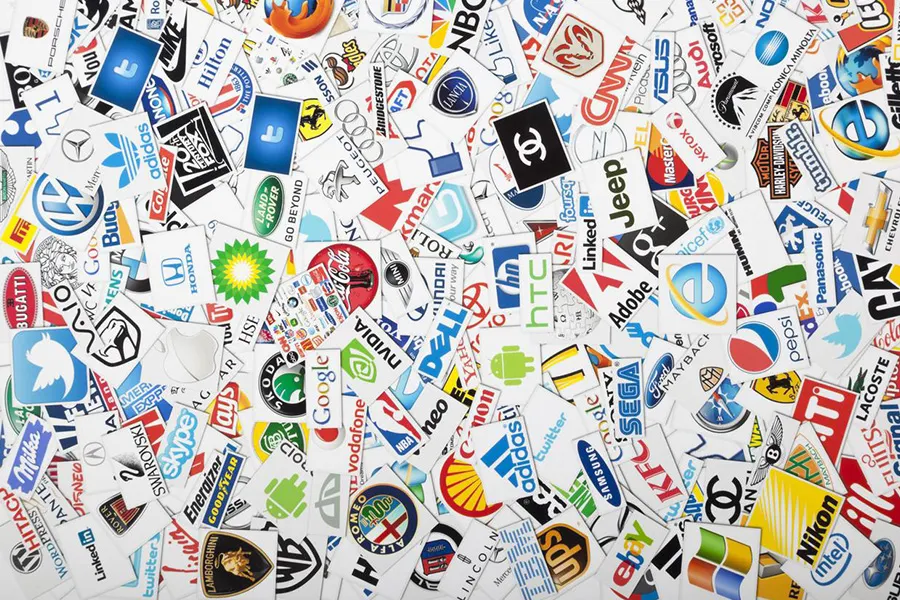Brands, their aesthetic, values, and voice, are what make businesses recognizable across the globe and, subsequently, the reason that a business can lock in customers no matter the location. A great example of this is Apple, which has been deemed the most valuable brand in 2022, reaching a valuation of $2.66 trillion — the only brand in the world to come near the $3 trillion mark. Having an iPhone and a Macbook computer immediately portrays you as successful, with influencers and celebrities all owning them. Apple’s branding is the main reason behind its popularity and subsequent position at the very top of global company valuations.
Another example is Coca-Cola, which thanks to great branding and marketing (including changing the color of Father Christmas from green to its globally recognized and patented red!) has risen to be one of the most successful soft drink manufacturers in history. In 2021, Coca-Cola’s brand was valued at $87.6 billion.
Brand building has many aspects to consider, which can leave entrepreneurs uncertain about where to start. We have outlined seven simple steps to help you develop a strong brand plan when considering how to start a brand.
Table of Contents
Customer segmentation and defining the target audience
Researching competitors and establishing brand purpose
Logo and slogan creation
Building a brand story
Establishing a brand voice
Integrating and staying true to your brand
Brand establishment: how to promote a brand once built
Customer segmentation and defining the target audience
The first step to building brand identity is defining the target audience.
Customer segmentation is a great way to understand who your customer is — their age and sex, personality, behavior, social demographics, geography, and more. Then, using that information you can mold your brand language, personality, and colors (among everything else) to that customer. In addition, this data can help a business understand how best to communicate with their customers — social media for younger customers, for example.
There are four core segmentation models that together can help a business determine product, price, promotion, and placement in a store:
- Demographic segmentation: Age, gender, income, education, and marital status.
- Geographic segmentation: Country, region, state, city, and town.
- Psychographic segmentation: Personality, attitude, values, and interests.
- Behavioral segmentation: Tendencies and frequent actions, product features or use, and habits.

Researching competitors and establishing brand purpose
A business’ brand must set itself apart from its competitors by answering the question of its purpose.
- What gap is it filling in the market?
- What are the unique selling points (USPs) of the brand?
- What does the brand aim to achieve in the market?
These can be such things as using ecological products, being the cheapest option on the market, offering superior quality, and more. When a customer understands why they are buying from a company, they feel a deeper understanding and connection to the brand, meaning they are more likely to return. Additionally, if the brand purpose speaks to them on a behavioral or psychographic level, they are more likely to feel brand loyalty.
To establish brand purpose, be sure to promote your brand’s mission statement — this can be shown through the logo, slogan, or advertisements.
Logo and slogan creation
The correct use of a logo and slogan are some of the best ways to make customers remember a brand. This is best exemplified by the fact that when looking at the below image, most people will recognize over 50% (if not 100%) of them.

Logos and taglines, or slogans, should reflect the brand’s personality. In this way, the customer will see the logo or read the slogan and immediately know, not just which business it is, but also what the business’ values and purpose are. To do this effectively, consider the color palette for the logo and be sure to use buzzwords for your brand slogan.
Example of a slogan
To use the Apple example once more, in 1998, Apple founders, Steve Jobs and Steve Wozniak, came up with the brilliant slogan “iThink, therefore iMac.” This slogan, coupled with the recognizable apple-shaped logo, was able to tell customers that the AppleMac computer was the best on the market in terms of technology, and the only one for anyone smart (which everyone believes they are).
Building a brand story
Building a brand story is an important part of any business’ brand strategy. Customers like to feel that they are contributing to something meaningful, or that they can relate to the brand in some way. This is where a brand strategy is invaluable.
There are multiple examples of successful brand strategies (not least Apple’s), but for some variety, here are a few successful brand stories:
- LEGO: One of the most well-known children’s toy manufacturers on the market tells the story of wanting to help inspire the builders of tomorrow — providing functionality with care for the education of future generations. This care for children and their development led to LEGO being adopted on a mass scale, from the 1930s to today.
- TOMS shoes: This brand employs the story of the founder, Blake Mycoskie, as the main driver. The story goes that Mr. Mycoskie was traveling around Argentina, where he witnessed huge poverty. This drove him to set up Toms, where for each pair of shoes bought, one poor child would receive a new pair of shoes. This brand story not only helped customers feel good about shopping at TOMS, but it led to them having a fondness and respect for the brand, which leads to brand loyalty.
The best way to create a high-impacting brand story is to have believable characters, a sense of purpose to improve something for your customers (such as addressing children’s development, poverty, or mass waste), and to say it with confidence and pride — you have to believe your story for your customers to believe it.

Establishing a brand voice
When brand building, the importance of brand voice cannot be understated. The brand voice should fully reflect the personality of the brand, the products being sold, and the target audience. It is obvious that a store selling hunting equipment will have a very different brand voice from one selling children’s toys.
Any company, whether run by a big or small business owner, should ensure that their brand voice is right for what they are trying to convey to their customer.
Brand voice example
A great example is Lush Cosmetics. This British cosmetic store with an emphasis on completely natural, quirky self-care products packaged in recycled packaging uses a handwritten font on its packaging and advertisements, and describes its products in cheeky ways “that adults will understand, but will go unnoticed by the young and innocent.”
This very clear, cheeky, fun, eco-focused approach has been perfected because the company knows who its target audience is — eco-aware, young adults who do not take themselves too seriously.
Integrating and staying true to your brand
It is possible for a brand to change its look (after all, even the legendary McDonald’s rebranded its packaging). However, the key to getting a new look for your brand is to not move away from the core values of the company. An example of this can be seen in Dunkin’ (formerly Dunkin’ Donuts), who despite shortening their name, stayed loyal to their core belief of being a good corporate citizen — thanks to which, they have been voted number #1 in customer loyalty.
In addition to staying true to your brand’s core values, it is important to integrate your brand message, voice, and story across all your platforms and outlets. This means using the same logo, slogan, font, colors, voice, messages, stories, and more across all advertisements, social media, eCommerce platforms, email marketing, product choices, and packaging.

Brand establishment: how to promote a brand once built
By defining a target audience and building a brand around it, a business can identify which are the best ways to market to it. For example, for a brand that targets younger customers, online (and social media specifically) is the absolute best way to go. For older customers, events, setting up stools, and communicating directly (through email or over the phone, for example) can be better options.
Whether online or on the high street, the recommended amount to invest in branding is 5-15% of a business’ total budget — 12-15% of which should be directly invested in social media branding.
Building a brand can be complex, but the improved recognition and customer loyalty received when it is done properly are completely worth it — just look at Apple!
Final thoughts on how to start a brand
In conclusion, building a brand is an essential aspect of starting a business, and it requires a strategic approach. By following the seven steps outlined in this article on how to start a brand, you can create a strong foundation for your brand building efforts. Remember that your brand identity should be a reflection of your brand purpose, and it should consistently communicate your values and value proposition to your target audience.




